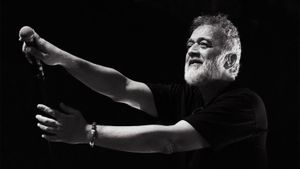Snapshots
French singer-songwriter, Jain, released her song, Makeba, in 2015. At the time, the Grammy-nominated single was an electronic world music single that did the club circuits for a while. Cut to 2023, the song is back with a bang—the measure of the song’s success is its virality. On Instagram, more than 4.8M reels have used Makeba for background music.
While affordable streaming services made buying music simple and YouTube gave unprecedented reach, it is only in the last two years that social media has become a medium of discovery for audiophiles and average consumers alike. Makeba is not the first of its kind, Bollywood songs and international chartbusters of yore have seen ample revival in the last two years. Similarly, new artistes have tapped into an unexplored universe of audience—within Indian audiences the likes of King, Tesher, Yashraj Mukhate, Yohani and more have achieved incredible reach and fame purely through the power of social media.
Virality is the buzzword
On a global scale, the success on the Chinese short format app TikTok predetermines a song's virality. But since its ban in India in 2020, we’re dependent on Meta’s Instagram Reels. Musicians and artistes are very conscious of how these viral trends can make or break their careers. In a previous conversation, Canadian-Indian music artiste, Tesher shared that the growth of TikTok and Instagram reels was unprecedented. The low barrier to entry makes it a no-brainer for an artiste to be actively present on these platforms and share their work. “That’s what I did, and honestly, I didn't even put that much of an effort, I just uploaded them and put the right hashtags on. If even a few people listen to your song that’s enough to realise that your song has something special in it,” he said.
Meta’s director of content and community in India, Paras Sharma shares how Aditya A’s song Chaand Baaliyan was used in more than a million reels. “While the song became popular, it also gave the artist, Aditya A, recognition like never before. We recently ran an initiative #1MinMusic which enabled artists to create and launch their music in a new format. It gave them an opportunity to experiment and explore music like never before,” he says, explaining how artistes have been able to reach and connect with a large audience.
It has taken just two years for an entire nation (and the world) to be enthralled by ‘trending’ music on social media, leading to a disruption in how the success of music and the musician is gauged. Shilpa Sharada, Director - Artist Services, Believe India, says, “Artistes can now harness the power of social media to unlock extended services and tap into a multitude of career-boosting possibilities. From taking control of their content to directly engaging with fans and monetising their creations, artists have experienced a paradigm shift in visibility and control. This transformative landscape stands in stark contrast to the challenges faced by artists over a decade ago when it was a struggle to even surface their content and connect with their audience.”
What does it mean for a musician?
More and more new-age musicians are using their innate comfort with technology to tap into this success. Tesher, who catapulted to success for his viral Jalebi Baby song (including the collaboration with Jason Derulo), believes that you can’t force and plan viral moments and songs. Virality is a coveted organic growth behaviour that holds the power to make or break modern entities. In a recent interview, Indian rap sensation, King was candid enough to say that he calculates the potential of each of his songs on social media. “We also need to realise that we’ve taken social media as a sidekick, but it is the main character,” he said.
"You end up listening to a lot of new music on Instagram Reels, which you otherwise would not. People are also using music for static posts and photographs! You realise the amazing work happening in music today. There's so much talent out there. My brother (Amaan Ali Bangash) and I are constantly wanting to work with newer and younger artistes who are really doing things differently. It's just a very interesting creative time that we are living in," says Sarod maestro Ayaan Ali Bangash.
The marketing potential for musicians on these social media platforms is immense but at the same time, it needs to be handled with care. As Gowri Jayakumar, an independent musician and singer, who performs under the moniker Pulpy Shilpy and founder of Orbs Cure Labs, says, “Handle with caution.” She believes that social media has changed the fabric of how and what we consume universally. Short format, quick, effective snippets of random information to appease easily bored attention spans. “It is not a sustainable way to build a consumer base, and neither is it advisable to cater to artistic formats that adhere to social media as your long game,” she adds.
Having a loyal fan base has evolved into the number of followers on social media. Orbs Cure Labs is also a music-led event organiser and clients often query them about an artiste’s follower count. “It does make a huge difference for cross-marketing and creating a buzz. As an artist, I used to be quite dependent on Instagram to connect, network, etc, but after I posted some politically sensitive news reportage, my account was deleted. However, it's a great tool to create awareness about your work,” Jayakumar goes on.
The musicophile and you
“The process of discovering music has entirely changed. Earlier there used to be CDs and cassettes, which your local shopkeeper would recommend. He would be the one to tell you about the latest releases and what’s coming into your region. It used to take time because it was physically coming to you from a distribution network. These shops would also be where you would meet like-minded listeners and would explore more. Today, CDs are gone, cassettes are gone—it’s all become digital with streaming services such as iTunes, Spotify, Gaana, etc. AI and algorithms are the shopkeeper that recommends or suggests new music based on what you are listening to. It's very interesting, though I think there is a problem of plenty. There is so much out there, it's very difficult to find, discuss and listen to the kind of music you want to listen to. Also, not just the consumption and the process of marketing and distribution of music has changed but also how music is received has changed. Music is always about vibrations, healing and emotions, this is something that we need to hang on to no matter what," reminisces singer Papon.
The consumers and music listeners are at the core of the democratisation of music. It is led by technological advancements in music recording, streaming services and social media. We circle back to the ability to discover new earworms. A simple poll amongst friends and family on Instagram revealed that access to new music, today, happens primarily on social media such as Lil Nas X’s Old Town Road. This exploration is democratic in nature, so whether it is an OST of a film, an independent artiste or an artiste of great repute—only if the piece of music is worthy of becoming an earworm does its reach expand.
The challenge is the short attention span. Amrita Hom Ray, a publicist known for her passion for music, explains, “I am listening to so many different music and artistes that my recollection or recall factor for a lot of them may not be as great now. Also, a viral song eventually does start grating my ears because it is everywhere without any escape. But that is, I guess, a part and parcel of the entire reality that we're looking at.” Due to the access and exposure to the internet on mobile devices, virality is an inescapable reality.
In my informal survey, the minority, not dependent on social media music discovery, also agreed that while social media might bring to light something new, how you use it as a tool to discover more is where the trick lies. “Am I actively going on to social media to discover music? I don't think so. People still discover music as a byproduct of consuming certain types of content,” explains Hom Ray. This is where platforms such as Spotify, Apple Music and even YouTube fare much better for long-haul music discovery and appreciation. “If I'm on YouTube or Spotify, I trust their algorithm to intuitively know what kind of music I've been listening to and recommend similar tracks and similar artists,” she adds.
A symphonic revolution
Music in a fast-paced digital world is a quickly evolving phenomenon, where algorithms and artificial intelligence have their fingers in the pie. Meta for its part is continuing to nurture the human facet of music on social media. Instagram recently announced a Young Songwriters Program in collaboration with the Indian Performing Rights Society. “This partnership aims to discover, promote, and nurture the talented young songwriters of India. We also partnered with some of the biggest music labels in India, such as Universal Music India, Sony Music India, Zee Music, Yash Raj Music, Saregama Music and more, to celebrate the resurgence of retro music on our platforms. The program, called ‘Retro on Reels’, is all about reimagining classic catalog songs, giving them a fresh twist, and releasing them on Reels and music streaming platforms,” informs Sharma.
For a music label, it means being serious about putting the spotlight on the musician. “Social media has truly empowered Indian artists, providing them with newfound independence, revenue streams, and direct avenues for fan interaction and audience optimisation, that is further enhanced with the support of technology firms like Believe. It's an extraordinary time for artists to thrive in this era of boundless opportunities and creative freedom by putting out more and more independent content that they have higher control over,” says Sharada.
However, the independent artiste still wants more skin in the game and inclusiveness. “I really hope it becomes inclusive, decentralised, resource-efficient, and equitable. It's a tiny speck of the urban demographic that can even imagine being a part of this ‘scene’. I wonder when we can stop negotiating our presence and actually focus on documenting overlooked stories via arts and have sufficient resources to begin exploring the depths of versatile aspects of existence,” says Jayakumar.
Jayakumar also pins the limited inclusion as a key reason for creative monotony. “It’s very exclusive, imitative, and hence, the narratives are homogenous and specific only to a certain kind,” she says. To this, Hom Ray adds, “I think as a music lover I would want more musicians and more artists to actually get their due by way of revenue because it is one of the biggest reasons people don't get into music actively. I'd want musicians and artists to get their due from social media.”
With inputs from Mitrajit Bhattacharya




